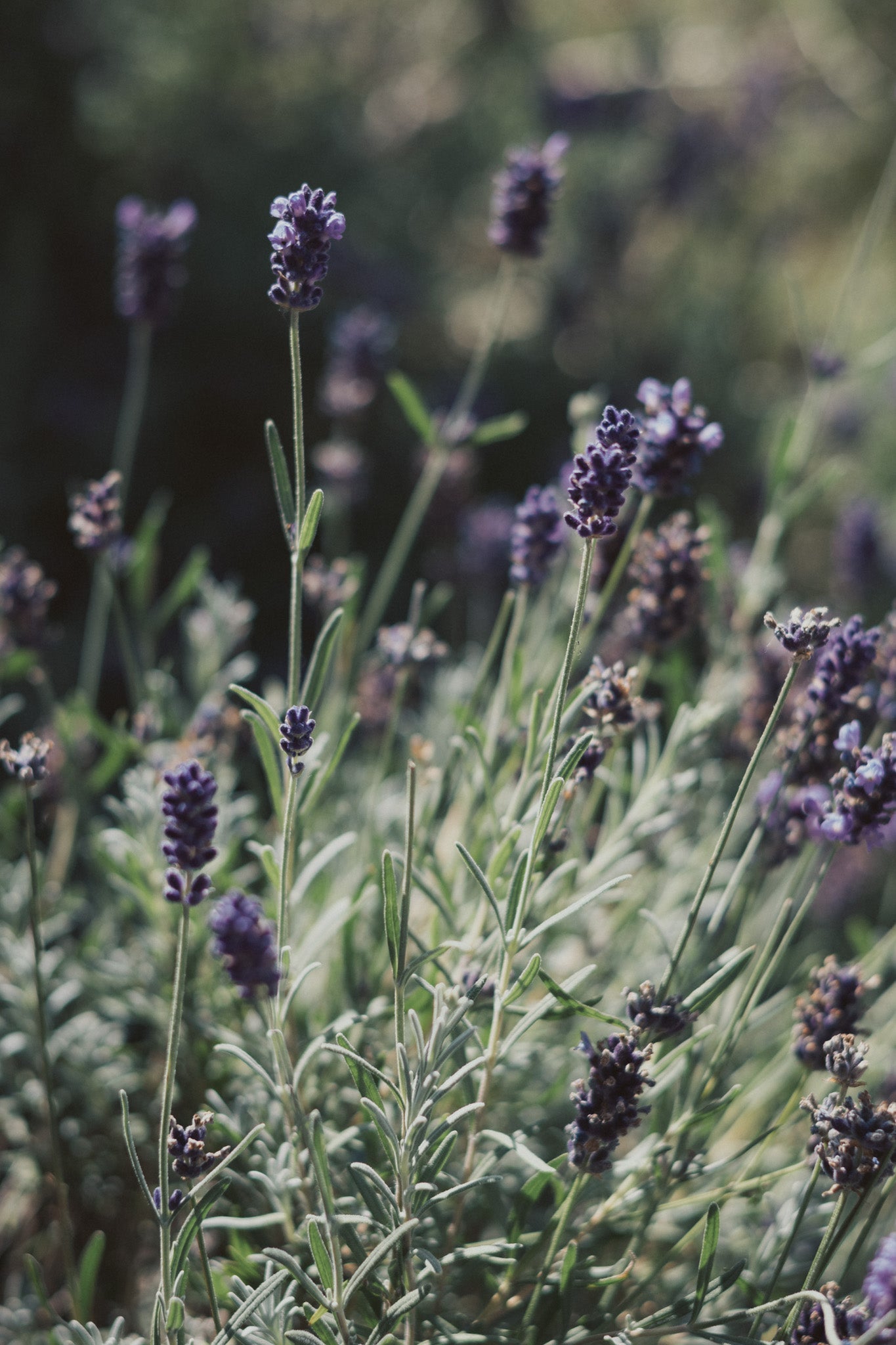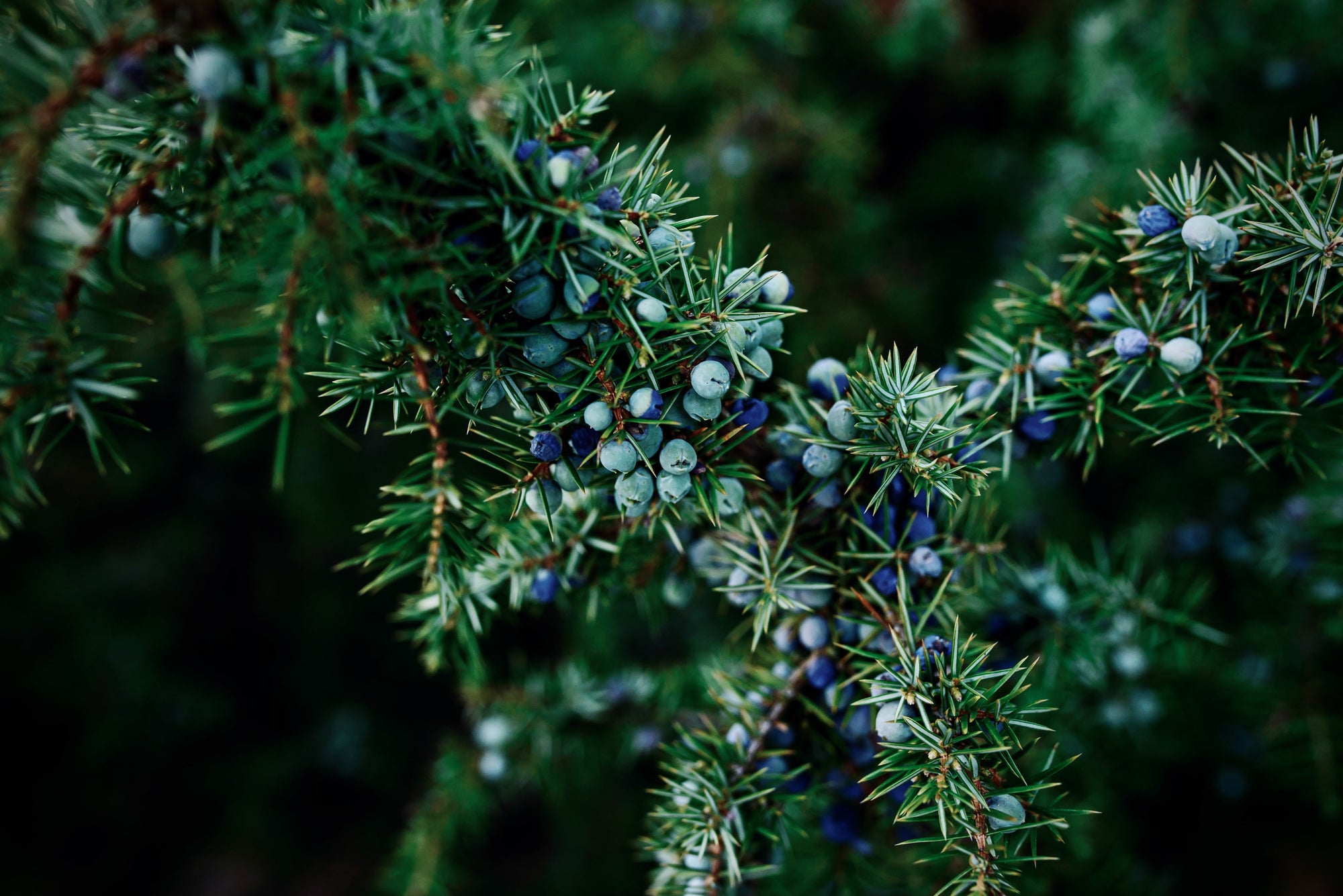
Associations
Element: Air
Planetary Ruler: Mercury
Mood: Calming, balancing, nurturing
Folkloric: Love, health, protection, peace
History
Lavender is one of the most universally loved and easily recognised scents in the western world. Its so well known, that when I thought 'how shall I describe its colour?' I realised there is no other word for it than the name Lavender itself! Native to The Mediterranean region, the Romans brought Lavender to the UK over 2,000 years ago where it has been a staple in herb gardens ever since. Its name is derived from the Latin lavare, meaning “to wash.” Indeed it was one of the aromatic plants that could be found in bathing oils of antiquity. If you ever find yourself in Bath, England – perhaps you can imagine the scent of Lavender rising from the steamy roman baths of Aquae Sulis, a luxurious and relaxing smell but also a practical and useful bathing agent given its antimicrobial actions!
There are several types of Lavender, there is English Lavender (Lavandula angustifolia), which is the one most commonly thought of when we think of Lavender (and the one we are concerned with in this blog post), but also there is 'Provence Lavender' which is a specific cultivar Lavandula x intermedia. There is also 'Spike', 'Nard' or 'Spikenard' (Lavandula latifolia) which historically was often mistaken for angustifolia and/or used somewhat interchangeably in medieval herbals. Spike is less sweet-smelling, and possibly less effective for healing. 'Lavindin' is a hybrid of true Lavender (angustifolia) and Spike, and it can be less expensive to make products with Lavindin, or to adulterate mixtures with it. While Lavender is not as expensive to make as some of the other oils we carry, the fact it is so popular in products can still make it in high-demand and thus commonly adulterated and diluted. That is why at Equinox we take care to source only lab-tested true organic Lavender (angustifolia) for our 10ml oil bottles so you can be sure you're getting the real thing!
By the 12th century, monastic gardens grew Lavender for both its beauty and its medicinal value. Hildegard of Bingen (1098–1179), the Benedictine abbess and herbalist, praised Lavender for its ability to “lighten the heart” and ward off melancholy. I do wonder if this was also because Lavender's oestrogen-balancing powers would be very important to a group of women such as Hildegard's nunnery. Its properties would have helped the nuns cope with both menstruation and menopause–something people (and certainly I) probably don't think about much when you think about nuns!
Today, we still package Lavender often in sachets and bundles to scent our linen drawers, or to make into salves and perfumes to aid relaxation and joy in the home. It also easily brings a smile to the face of any passerby who smells it wafting from gardens and windowsills alike.
Traditional Uses
The term 'aromatherapy' was coined by René-Maurice Gattefossé in the early 20th century. In many ways his journey started with Lavender. He had been working as a chemist in a parfumerie in France when one day he suffered a terrible burn from an explosion in his laboratory. In a panic he instinctively plunged his hand into the nearest vat of liquid to stop the burning. This vat happened to be Lavender essential oil, and he was astonished that the pain disappeared instantly and his hand healed within days. This set him on a quest to learn more about the healing properties of essential oils, and the rest is history as they say. Of course, discerning herbalists will know that essential oils themselves (the natural compounds within plants) have been used for millennia to heal in the form of tisanes, poultices, and even distilled essences ever since Avicenna's invention of the steam distillation process over a thousand years ago. Still (no pun intended) it is remarkable that Lavender was the oil that really 'started it all' for the students of Gattefossé, and modern aromatherapists.
In older medieval herbals such as those of Culpeper and Gerard, the Lavender they speak of seems to be Spike and interestingly they don't have a terrible amount to say about the flower compared to some of their other entries. It is however clear to me from the excerpts we do know that Lavender's ability to calm the central nervous system, aid in 'women's courses,' perhaps even heal wounds on the battlefield were all accepted as properties.
Anecdotally in my own family back in the USA, my grandmother grew lavender in her garden and was very into her healing herbs. My father always used the inhalation of Lavender oil to clear his sinuses or help heal headaches and taught me to do the same. I would also drop some on my pillow before exams as a child, and use it now for muscle rubs to ease pain and in my skincare to support repair and to soothe. In a way, like Gattefossé, Lavender was my entry point to aromatherapy too. Lavender really does have such a wide range of uses that when I was studying for my qualifications—I would sometimes wonder if an aromatherapist really needed anything other than Lavender in their apothecary because it was so universally applicable!
Folklore
Sometimes modern folklore and 'urban myth' becomes so powerful that it almost rewrites the past or completely overshadows it. I could not find in my research any specific folk charms, myths, or stories about Lavender from first-party sources in antiquity. But I did find many modern day resources claiming that Lavender was associated with Hecate, or the Virgin Mary, or that Adam and Eve took it with them from Eden, or that it is used to attract faeries to your garden or could be used in love charms. These are all lovely ideas, and I'm glad to see Lavender getting such a full modern life.
One bit of concrete folklore I came across was this folksong / poem from the 17th Century called "Lavender's Blue" which has a few variants.

Lavender's blue, dilly dilly, lavender's green,
When I am king, dilly dilly, you shall be queen:
Who told you so, dilly dilly, who told you so?
'Twas mine own heart, dilly dilly, that told me so.
Lavender's green, diddle, diddle,
Lavender's blue
You must love me, diddle, diddle,
cause I love you,
I heard one say, diddle, diddle
since I came hither
That you and I, diddle, diddle,
must lie together.
This sounds a bit like "Roses are red, violets are blue..." don't you think? As with a lot of folklore, it leaves one to wonder what came first–the association of love with Lavender or these songs about lovers becoming entwined with the symbol of the Lavender?
In Victorian floriography for example Lavender was assigned the meaning of devotion and serenity, making it a common inclusion in bridal bouquets and love letters. It is easy to make a dried posy of Lavender flowers and I personally have a few bundles hanging about my house for a bit of luck and happiness.
Speaking of rhymes and poseys... I'm sure some of you will be familiar with the theory that this popular children's rhyme is actually describing the bubonic plague, where poseys of Lavender and other herbs were carried to ward off sickness.
Ring around a Rosey
Pocketful o’ posies
Ashes, ashes,
We all fall down.
Now according to the US Library of Congress, the fact that this rhyme was about the bubonic plague is in itself a folklore/urban myth that has gained traction and survived until today. The use of poseys and burning Lavender to ward of the plague however does seem to hold some credence.
I will leave you with a final piece of more modern folklore which comes from one of my favourite films of all time, Practical Magic. (Which yes, I am aware was originally a book, but I haven't read it!)
"Always throw spilled salt over your left shoulder, keep rosemary by your garden gate, plant lavender for luck, and fall in love whenever you can."
-Alice Hoffman, Practical Magic (1995)
This quote feels enduring in the modern psyche that Lavender is lucky, and in general it aligns well with its gentle, uplifting, and positive character. If I can leave you with any picture of Lavender it is this: a motherly, tender and soothing herb that has stood the test of time and become one of the most beloved and famous flowers in all of Europe. A staple in the garden, as well as on the shelf.
Aromatic Profile
- Note: Middle to Top
- Scent Family: Floral, herbaceous, slightly sweet
Essential Oil Safety Information
- Never ingest/take internally.
- Avoid contact with eyes and mucous membranes.
- Keep away from children and pets.
- Full safety information and directions will be provided in a safety card upon purchase, please read fully.
Bibliography & Sources
Battaglia, S. (2003). The complete guide to aromatherapy (2nd ed.). International Centre of Holistic Aromatherapy.
Carta, Louise (2024). Diploma Course Study Materials. The Aromatherapy Company.
Culpeper, N. (1653). The Complete Herbal. London: Peter Cole. (Public Domain)
Gerard, J. (1597). The Herball or Generall Historie of Plantes. London: John Norton. (Public Domain)
Grieve, M. (1971). A modern herbal: The medicinal, culinary, cosmetic and economic properties, cultivation and folk-lore of herbs, grasses, fungi, shrubs & trees (Vols. 1–2). Dover Publications. (Original work published 1931)
Hildegard of Bingen. (2001). Physica (P. Throop, Trans.). Healing Arts Press. (Original work c. 1150)
Lavabre, M. (2020). Essential oils and aromatherapy workbook. Healing Arts Press.
Tisserand, R., & Young, R. (2013). Essential oil safety: A guide for health care professionals (2nd ed.). Elsevier Health Sciences.
Winick, S. (2014, July 24). Ring Around the Rosie: Metafolklore, Rhyme and Reason | Folklife Today. Library of Congress. https://blogs.loc.gov/folklife/2014/07/ring-around-the-rosie-metafolklore-rhyme-and-reason/




